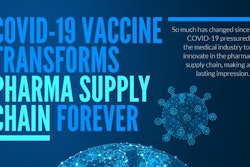
Vaccination numbers are climbing, states are reopening and the pressure to go “back to normal” is mounting. For many businesses, however, “back to normal” is a long way off. With continued supply chain disruptions and shipping delays, certain pre-pandemic business drivers (like sustainability) may not be as within reach for merchants as they once were. But, these can (and should) come back into the fold. As industries (and life) continue recovery, the already-planted seeds of consumers demanding more with their buying decisions will grow. Therefore, even though the Coronavirus disease (COVID-19) may have interrupted the seller’s role in creating a sustainable future, a focus on sustainability is still key to staying relevant in a commercial landscape shaped by conscious consumers.
The lost luxury of conscious consumption
By the start of 2020, the concept of conscious consumption and production was well established in mainstream thought. When consumers demanded more environmental responsibility from businesses, producers responded with more sustainable products, packaging and practices. Many consumers were willing to compromise on things like time to delivery or product price if they perceived a purchase to be more sustainable than a more convenient or less expensive alternative. Traditional plastic bags disappeared in grocery stores, being replaced by customer brought reusables or, at worst, paper.
Then COVID-19 hit, and in many ways the efforts needed to slow the spread of the virus pitted the ideals of conscious consumption against the practicalities of navigating a pandemic. Supply chains and delivery systems fell apart almost overnight, limiting options for both producers and consumers. What’s important to recognize is that normalcy still hasn’t returned. Other changes were more calculated. Reusable shopping bags vanished in favor of sanitized plastic bags. Single-use personal protection equipment (PPE) like disposable masks and gloves became wardrobe staples and made their way into roadside litter. Perhaps most significantly, increased reliance on online purchases for household staples meant that more packaging and fuel was being used to get products to consumers, oftentimes in multiple shipments from different warehouses.
On the production side of things, supply chain disruptions and delays replaced focus on sustainable practices, primarily out of the financial and psychological practicality of avoiding a complete operations shutdown.
Looking to the future during an uncertain present
So, now what? While some aspects of life, consumption and business are starting to return to “normal”, supply chain disruptions are still very much a reality. Add to that the COVID-19 outbreaks still hitting warehouses and production facilities and you have countless businesses struggling to manage consumer expectations while not being able to reliably receive, stock and distribute products.
With no end in sight for supply chain disruption, and a consumer market that has simultaneously expressed a fervent desire for sustainable commerce and embraced online ordering as the “new normal,” the seller’s role in creating a sustainable future has changed. The uncertainty of the present makes planning for the future difficult, and until issues in the supply and shipping chain are resolved, creating or maintaining sustainability in areas like fulfillment and product sourcing will take a back seat to other concerns.
Centering sustainable strategic choices
Despite all of this uncertainty, sellers can’t afford to lose sight of the fact that consumer demand for sustainable commerce hasn’t gone away. This is especially true for Millennial and Gen Z purchasers, who are far more willing to pay more for sustainability than their Baby Boomer and Gen X counterparts and are set to surpass their purchasing power in the next few years.
What businesses can do to appeal to these conscious consumers while operating with an unstable supply chain is to focus on areas where sustainability-focused activities can exist independently of shipping and fulfillment disruptions while still planning for the future.
Consider appealing to conscious consumers via your corporate social responsibility efforts. Make it clear to your audience that your organization has a mission beyond profit, one which takes creating a sustainable future into consideration. Align your marketing communications, corporate messaging, and public relations with your commitment to sustainability. Speak to what your company can control, whether that’s spreading the word about eco-friendly and ethical industry practices, reporting on progress toward carbon neutrality in your workplace, or publishing an annual environmental impact report.
In the meantime, in anticipation of a more dependable supply chain situation and the ability to exert more control over shipping and fulfillment processes, look into product and process improvements that can improve operational sustainability. These may include sourcing higher quality and renewable materials, adding subscription options for certain products, offering incentives for customers who choose consolidated shipping options and improving onsite merchandising and product descriptions to minimize returns.
Additionally, customer communication has never been more key. Consumers might not be aware of continuing supply chain disruptions and may not be as forgiving of delays as they were in 2020. Be transparent and communicative with your audience, giving them the opportunity to engage with and support your ongoing efforts.
Where do we go from here?
Sellers are currently dealing with unprecedented demand from a consumer market that has grown accustomed to shopping online and benefitting from a nearly unattainable standard of shipping. But, even with the twin challenges of increased consumer demand and continuing supply chain uncertainty, it’s important to keep sustainability central to your business strategy.
With Millennial and Gen Z shoppers aging into greater purchasing power, the demand for sustainability in commerce is not going away anytime soon. Businesses will need to meet the expectations of conscious consumers or risk falling into irrelevance. Be proactive now, focus on the aspects of your operation that you can control, and prioritize the preferences of the consumers who will be keeping you in business in the years to come.


















